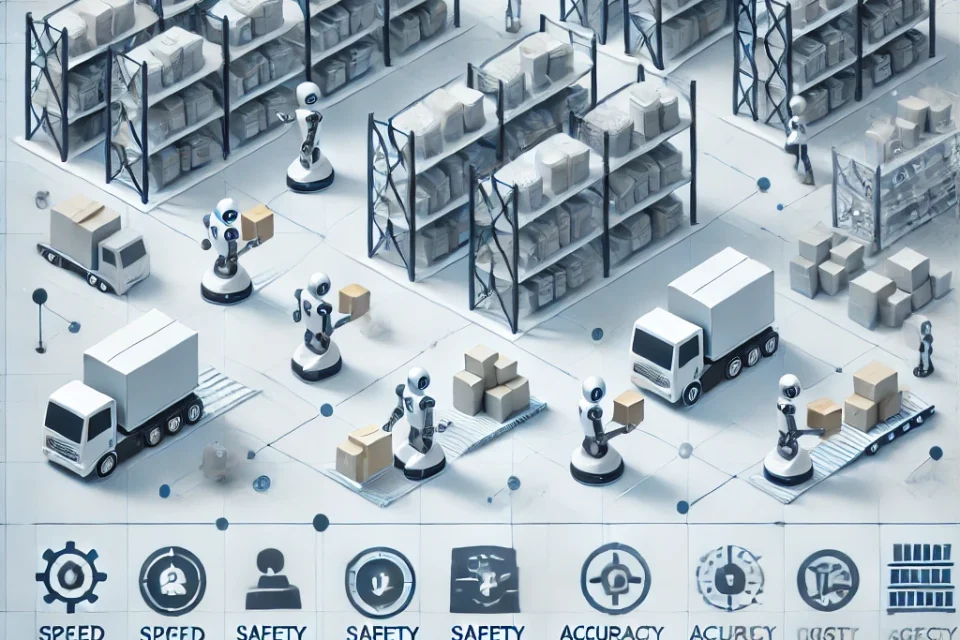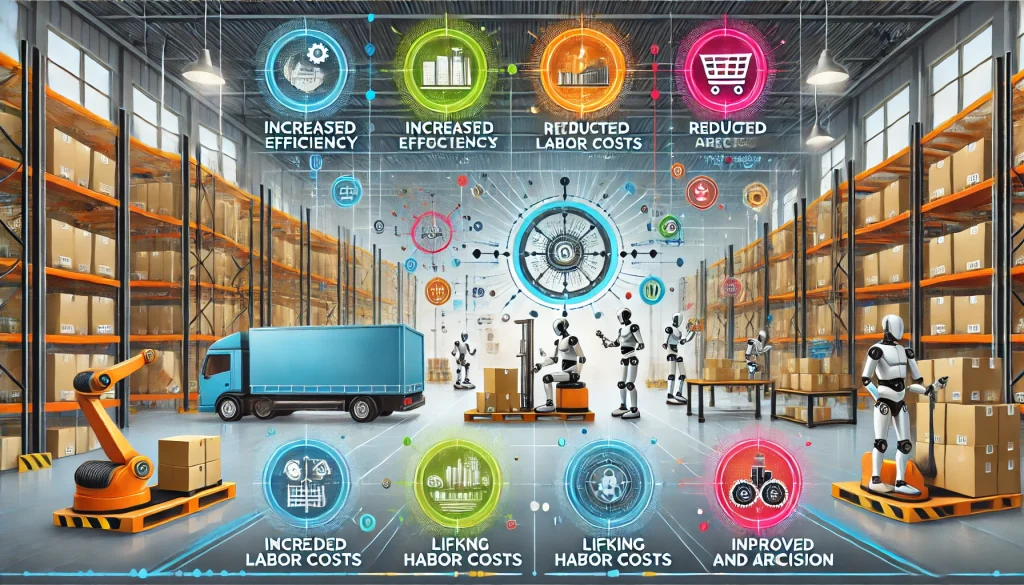Top Benefits of Robotics in Warehousing

Top Benefits of Robotics in Warehousing
Welcome to the future of warehousing! If you’re wondering how robotics is revolutionizing the warehouse industry, you’re in for an exciting exploration. Let’s dive into the transformative benefits that robotic solutions bring to modern warehouses.

Understanding Warehouse Robotics
Evolution of Warehouse Automation
Remember the days when warehouses were entirely manual operations? Those days are rapidly becoming history. The journey from basic conveyor belts to today’s sophisticated robots is nothing short of remarkable. Think of it as the evolution from a bicycle to a Tesla – that’s how dramatic the transformation has been.
Types of Warehouse Robots
Today’s warehouses employ various robotic solutions, each designed for specific tasks. From Autonomous Mobile Robots (AMRs) scurrying around the warehouse floor to robotic arms handling delicate picking operations, the variety is impressive. Picture a well-orchestrated symphony where each robot plays its unique part in the warehouse operation.
Key Advantages of Robotics Implementation
Enhanced Operational Efficiency
Increased Speed and Accuracy
Did you know that robotic systems can process orders up to 4-5 times faster than manual operations? That’s right! These mechanical marvels don’t just work faster – they maintain consistent accuracy levels above 99.9%. It’s like having an Olympic athlete who never gets tired and keeps breaking records.
24/7 Operation Capability
Unlike human workers, robots don’t need coffee breaks or vacation time. They can operate around the clock, only pausing for scheduled maintenance. This continuous operation capability is particularly valuable during peak seasons when demand skyrockets.
Cost Reduction Benefits
Labor Cost Optimization
While the initial investment in robotics might seem substantial, the long-term savings are impressive. Robotics systems typically pay for themselves within 2-3 years through reduced labor costs and increased efficiency. Think of it as planting a money tree that keeps growing year after year.
Energy and Resource Savings
Modern warehouse robots are incredibly energy-efficient. They optimize their movements, use regenerative braking, and can work in lower-light conditions, resulting in significant energy savings. Some facilities report up to 20% reduction in energy costs after implementing robotic systems.
Safety and Workplace Improvements
Reduced Workplace Injuries
Safety isn’t just a priority – it’s a guarantee with robotic systems. By handling heavy lifting and repetitive tasks, robots dramatically reduce workplace injuries. Statistics show that warehouses using robotics experience up to 72% fewer safety incidents.
Enhanced Worker Satisfaction
Contrary to popular belief, robots aren’t replacing workers – they’re empowering them. Employees can focus on more engaging, strategic tasks while robots handle the mundane and physically demanding work. It’s a win-win situation that leads to higher job satisfaction and reduced turnover rates.
Data-Driven Decision Making
Real-time Analytics and Reporting
Modern warehouse robots are like mobile data centers. They continuously collect and process information about inventory levels, picking speeds, and operational bottlenecks. This real-time data enables managers to make informed decisions quickly and efficiently.
Predictive Maintenance Capabilities
Imagine knowing about potential equipment failures before they happen. That’s exactly what modern robotics systems offer. Through advanced sensors and AI algorithms, they can predict maintenance needs, preventing costly downtime and extending equipment life.
Scalability and Flexibility
Seasonal Demand Management
One of the biggest challenges in warehousing is managing seasonal peaks. Robotic systems can easily scale up or down based on demand, without the complexities of hiring and training temporary workers. It’s like having an accordion that can expand or contract as needed.
Easy Integration with Existing Systems
Modern warehouse robots are designed to play nice with your existing systems. Whether it’s your WMS, ERP, or inventory management system, integration is usually smooth and straightforward. Think of it as adding a new player to an existing team – they quickly learn the playbook and fit right in.
ROI and Long-term Benefits
The return on investment from warehouse robotics extends beyond mere financial gains. From improved customer satisfaction due to faster deliveries to enhanced market competitiveness, the benefits compound over time. Studies show that automated warehouses typically see a 25-30% increase in overall operational efficiency within the first year.
Conclusion
The benefits of robotics in warehousing are clear and compelling. From operational efficiency to worker safety, from cost savings to data-driven insights, robotic solutions are transforming warehouses into smarter, safer, and more profitable operations. The future of warehousing is here, and it’s powered by robotics.
Frequently Asked Questions
- How long does it typically take to implement a warehouse robotics system?
Implementation timelines vary but typically range from 3-6 months, depending on the complexity and scale of the system. - What’s the average ROI timeframe for warehouse robotics?
Most facilities see ROI within 18-36 months, with some achieving payback in as little as 12 months. - Do warehouse robots require specialized maintenance staff?
While some maintenance expertise is needed, many providers offer comprehensive training and support packages. - Can robots work alongside human workers safely?
Yes, modern robots are equipped with advanced safety features and sensors that enable safe human-robot collaboration. - How do warehouse robots handle power outages?
Most systems have backup power solutions and can safely complete their current task before shutting down during power failures.